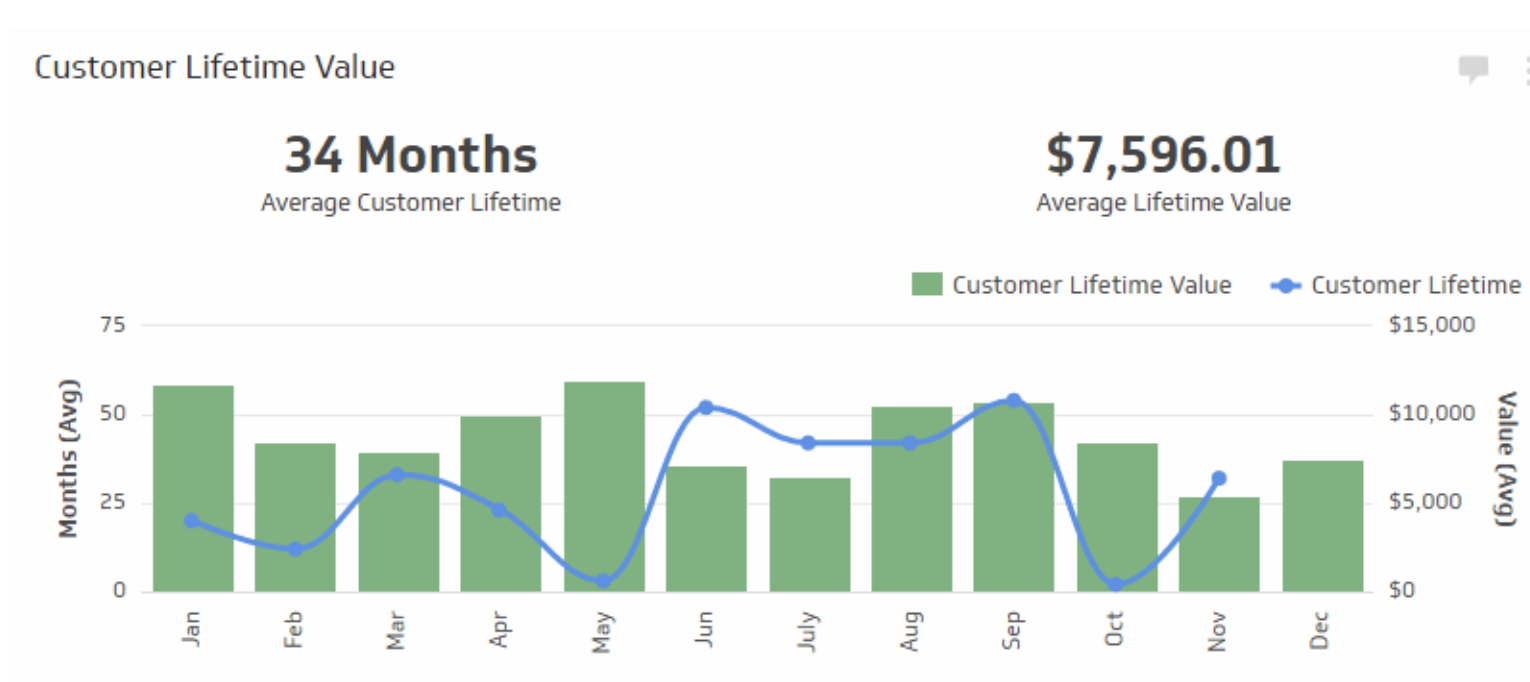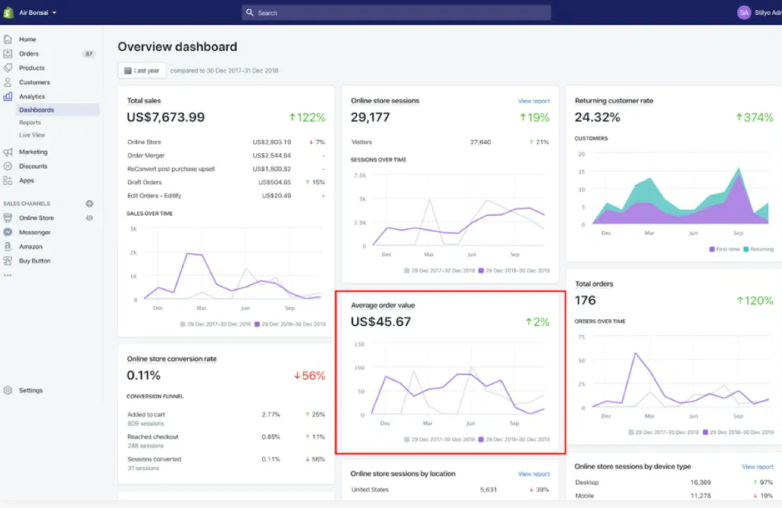Key Takeaways
CLV is the total revenue your business earns from a single customer throughout their lifetime.
- Higher CLV indicates a better customer experience, stronger retention, and improved marketing ROI.
- Improving CLV requires investment in personalization, customer support, and post-purchase interactions to reduce customer churn.
- Every customer interaction contributes to long-term value.
What Is Customer Lifetime Value (CLV)?
Customer Lifetime Value is the projected revenue a business earns from a customer during their entire relationship. It reflects how much the average customer spends, how often they buy, and how long they remain loyal.
Why Measuring Customer Lifetime Value Matters
- Helps prioritize marketing investments toward high-value customers.
- Guides better customer experience and customer service strategies.
- Informs pricing, product development, and customer success initiatives to increase your CLV.
- Highlights the value of customer retention versus constant acquisition.
Ultimately, lifetime value is the total value a customer can help generate, not just at the point of sale, but through repeat purchases, referrals, and brand loyalty.

How to Calculate Customer Lifetime Value
Use this basic CLV formula:
CLV = Average Purchase Value × Purchase Frequency × Average Customer Lifespan
For example:
- Average purchase value: $120
- Average purchases per year: 3
- Customer lifespan is crucial for understanding customer churn and retention for 6 years.
CLV = $120 × 3 × 6 = $2,160
Advanced CLV Models Include:
- Customer acquisition costs (CAC)
- Gross profit margin
- Retention and churn rates
- Customer segmentation
- Discount rates over time
CLV helps businesses predict long-term revenue and plan for customer-centric growth, thereby increasing your Customer Lifetime Value (CLV).
15 Proven Tactics to Increase Customer Lifetime Value
Here are strategies to improve your customer lifetime value, optimize every customer interaction, and grow long-term profits within your customer base:
1. Deliver a Better Onboarding Experience
An excellent customer onboarding process builds confidence and encourages product adoption.
- Guide new customers with tutorials or walkthroughs.
- Reduce time-to-value for faster results and increase your customer satisfaction.
- Set expectations and track early milestones.
2. Personalize the Customer Journey
Personalization enhances customer lifetime value (CLV) by delivering value over time to each customer segment.
- Use data to tailor offers to every customer profile.
- Segment based on behavior, sentiment, or stage in the customer lifecycle
- Send timely, relevant communications based on customer insights.
3. Encourage Repeat Purchases Through Retargeting
Help customers continue engaging with your brand through:
- Abandoned cart emails
- Personalized product reminders
- Incentivized re-purchase offers
4. Upsell and Cross-Sell Intelligently
Increase revenue from your average customer without acquiring a new one.
- Recommend upgrades based on previous purchases.
- Bundle complementary products.
- Use loyalty or purchase data to time the offer.
5. Create a Customer Loyalty Program
Programs that reward frequent engagement can lead to improved retention.
- Use points, cashback, or tiered perks.
- Encourage referrals and advocacy.
- Highlight VIP benefits to top customers.
6. Improve Customer Service Quality
Excellent customer service directly improves retention.
- Offer omnichannel support (chat, email, phone, social)
- Empower support agents with customer data.
- Provide proactive support and resolve issues before escalation.
7. Collect Customer Feedback Regularly
Use customer satisfaction surveys to improve your customer experience management:
- Ask for feedback at key stages
- Analyze NPS, CSAT, and CES metrics.
- Act on insights and communicate changes.
8. Build Strong Customer Relationships
Enhance your customer’s emotional connection with your brand:
- Celebrate customer birthdays and anniversaries
- Personalize communications to enhance the overall customer experience.
- Provide exclusive experiences for loyal customers.
9. Offer Subscriptions or Replenishment Services
Drive recurring revenue with predictable value.
- Set up auto-renewals.
- Offer discounts on subscription billing.
- Remind customers when it’s time to reorder
10. Provide High-Value Content
Educational content increases customer engagement and brand authority.
- Publish how-to blogs, videos, and tutorials.
- Host webinars, interviews, or guides.
- Create a knowledge base to support customer success.
11. Optimize Pricing for Customer Value
Customers are willing to pay more if they see greater overall customer value.
- Use value-based pricing.
- Test different tiers or bundles.
- Offer annual plans with discounts.
12. Improve Customer Experience Management
Track and enhance the entire journey—from first interaction to repeat purchases:
- Map the customer journey.
- Identify and eliminate friction points.
- Use CRM to track and automate touchpoints.
13. Use Behavioral Segmentation
Analyze patterns and group your audience to better serve each segment:
- Frequency of purchase.
- Products viewed or favorited.
- Engagement with content or support.
14. Identify Your Best Customers
Not every customer contributes equally. Focus efforts on high-value segments.
- Use RFM (Recency, Frequency, Monetary value) analysis.
- Offer tailored incentives to top-tier customers.
- Treat VIPs with special care to ensure they have a high customer lifetime value.
15. Enhance Your Customer Success Strategy
Especially vital for SaaS and B2B models.
- Assign account managers
- Set up check-in calls or QBRs (quarterly business reviews)
- Proactively help customers achieve goals.
Common Mistakes That Reduce Customer Lifetime Value
Avoid these pitfalls to maintain a strong customer base:
- Ignoring post-purchase experience
- Sending generic, non-personalized messages
- Over-relying on short-term acquisition over long-term retention
- Failing to act on feedback
Customer Lifetime Value Benchmarks and KPIs
Average Customer Lifetime Value by Industry
| Industry |
Average CLV |
| SaaS |
$3,000–$7,000 |
| E-commerce |
$100–$1,000 |
| Subscription boxes |
$400–$2,000 |
| Financial Services |
$5,000–$15,000+ |
Key CLV KPIs to Monitor
- Average Order Value (AOV)
- Repeat Purchase Rate
- Churn Rate
- Customer Retention Rate
- Net Promoter Score (NPS)

Final Thoughts: Maximize the Value of Every Customer
Customer Lifetime Value is more than a number—it’s a reflection of how well you serve your existing customers. By focusing on every customer interaction and delivering better customer service and experiences, you create loyal advocates who stay longer, spend more, and refer others.
Investing in the full customer lifecycle—from acquisition to retention—helps you build a sustainable business that grows organically through trust, satisfaction, and long-term relationships.


